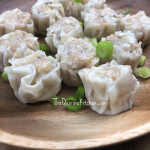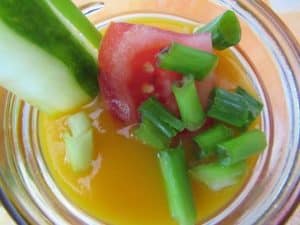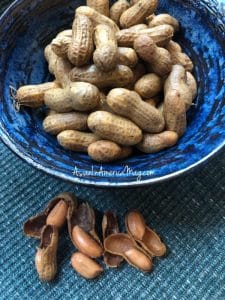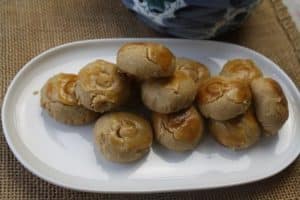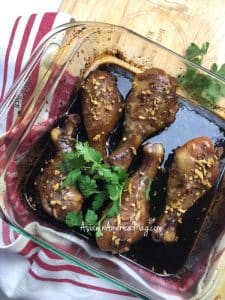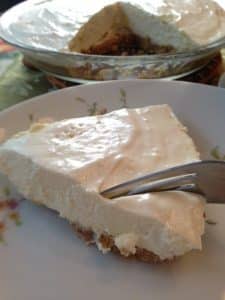Pork Siomai
As an Amazon Associate and member of other affiliate programs, I earn from qualifying purchases.
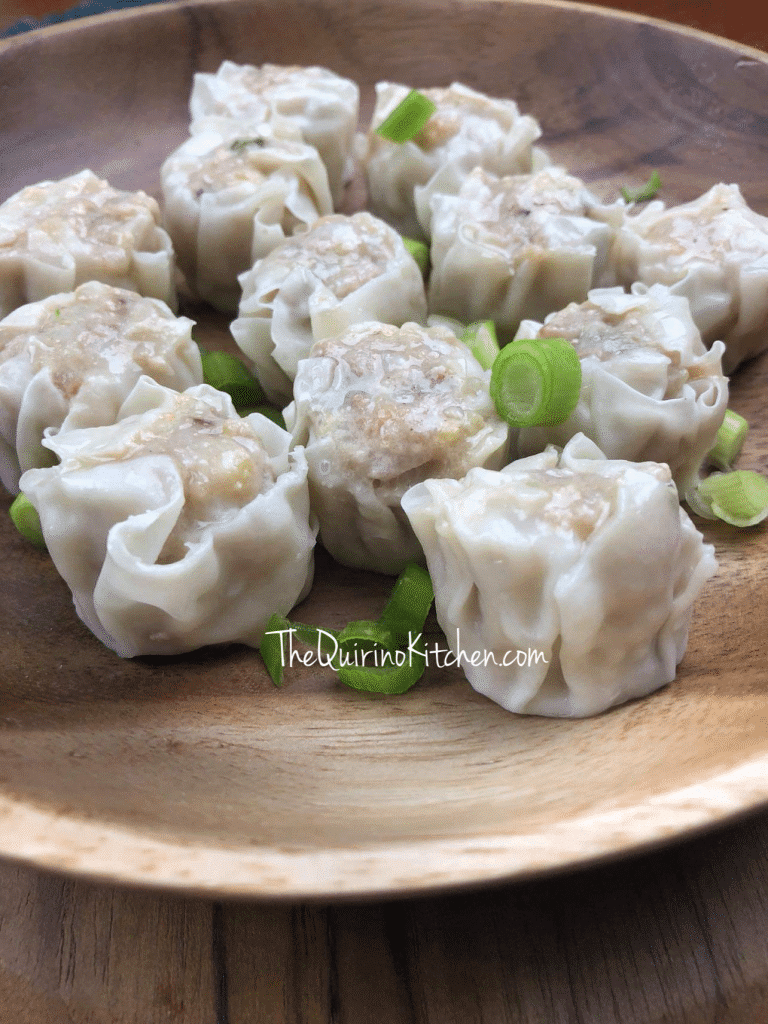
I’m cooking Pork Siomai to celebrate the Lunar New Year. Filipinos love to mark the Chinese New Year by serving foods that symbolize prosperity and good luck for the home and the family.
Pork Siomai to Filipinos, or shumai as most of you know it, is a steamed dumpling. A thin wonton wrap made of flour and water, is used to wrap a filling of pork, sometimes with shrimps, and seasonings. These dumplings are shaped by hand, like a little open cup, with pleated sides, to make it look like a flower.
My recipe version has a ground pork and shrimps filling with crunchy chopped water chestnuts, scallions, and flavored with soy sauce, rice wine and seasonings. After wrapping the pork filling in wonton wrappers, I steam the siomai dumplings stovetop.
We enjoy these with other Chinese-influenced dishes like noodles or pancit for long life, and steamed fish for prosperity. Then there are other favorites like char-siu pork, lumpia shanghai, and sweets like pineapple tarts, peanut cookies, and the must-have Tikoy or Nian Gao, a steamed rice cake.
What Ingredients Are Needed
Here are the ingredients needed for Pork Siomai:
- Ground pork
- Fresh shrimps
- Scallions
- Eggs
- Water chestnuts – canned or fresh
- Bread crumbs
- Rice wine or dry sherry
- Soy sauce
- Salt and pepper
Equipment needed:
- Large steamer
- Mixing bowls
- Chopping board
How to Cook Pork Siomai
To make the siomai: First, prepare the pork filling by mixing all the pork, shrimps, eggs, scallions, chopped chestnuts, and seasonings. Everything should be mixed in a large bowl.
Then prepare the wonton wrappers. I often use store-bought wrappers. I used the square-shaped ones for this recipe. You’ll need an egg wash – one egg mixed with a little water – to help seal the sides of the wonton wrapper, so that the filling does not fall out.
I admit, the wrapping part takes some time. This is why I make them ahead, preferably on a weekend when there’s more time. When my sons were little, but old enough to help in the kitchen, they would help wrap the wontons for siomai. Teaching them has paid off and they’re now all grown and experts in their own kitchens.
Once the wontons are filled and the siomai is nicely wrapped and shaped, refrigerate the dumplings for at least 1 hour. Cooling the siomai in the refrigerator makes them easy to handle.
I also start boiling the water in the bottom pot of the steamer. The siomai will cook faster and more efficiently if the water is briskly boiling underneath.
Once the siomai is steamed and cooked completely, serve them warm with other dishes and with steamed rice.
Tip: I like to make the pork filling and wrap them ahead when I have the time, like weekends. Then, I freeze the siomai, uncooked and take it out to thaw at room temperature on the day I’m ready to steam them.
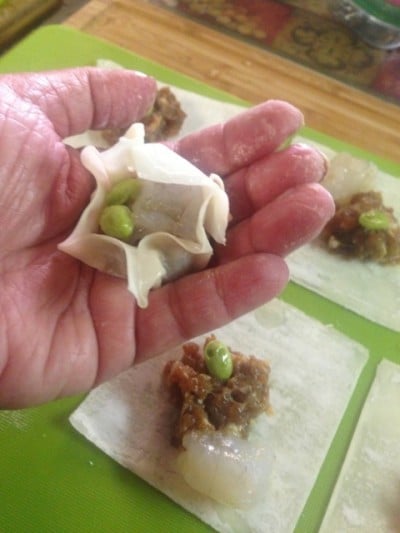
The Filipino Sawsawan for Siomai
Side dipping sauces are often an important part of the Filipino menu.
Small, ramekin-sized bowls are served on the side of dishes, filled with different sauces, from salty, sweet, to spicy, in a variety of aromas — for each diner to adjust the flavorings to their preference.
For most Filipinos, a sawsawan or dipping sauce of toyo (soy sauce) sprinkled with calamansi (or lemon juice) would be an ideal accompaniment to Pork Siomai.
And don’t forget, you can enjoy these savory, juicy Pork Siomai any day, any time you crave steamed pork dumplings at home, like they serve at dimsum.
Here’s to prosperity, good fortune and much abundance to all of you, my dear readers in this Year of the Dragon.
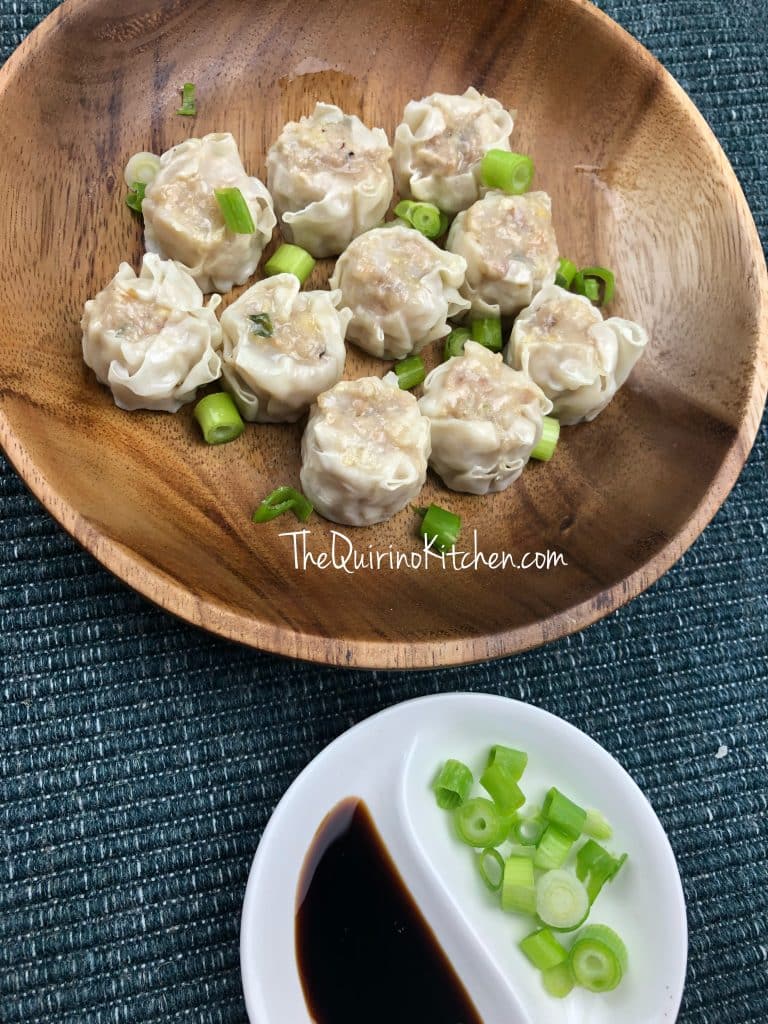
Pork Siomai
Equipment
- Large multi-layered steamer, for stovetop
- Mixing bowls
- chopping board
- Rimmed plate to fit inside steamer; Tip – I use a pie plate.
Ingredients
- 1 pound ground pork
- 1/2 pound fresh shrimps, peeled, heads and tails removed; chopped
- 2 stalks scallions, whites, chopped fine; greens, sliced for garnish
- 3/4 cup chopped water chestnuts (canned, drained)
- 2 whole eggs
- 1/4 cup plain bread crumbs
- 2 Tablespoons xiao xing rice wine or dry sherry
- 1/4 cup soy sauce; like Silver Swan or other Filipino brands
- 1/2 teaspoon sesame oil
- ½ teaspoon salt
- ½ teaspoon ground black pepper
- 1 package wonton wrappers, square-shaped; about 40 pieces
For egg wash to seal wontons:
- 1 whole egg
- 1/4 cup water
For side dipping sauce
- 1/2 cup soy sauce
- 2 Tablespoons calamansi or lemon juice
For serving
- steamed rice
Instructions
Prepare steamer :
- Fill the bottom pan of the steamer with water to the brim.Cover and start turning heat to a high. It takes time for the water to boil.
To make the pork filling:
- In a large bowl, combine the ground pork, chopped shrimps, scallion whites, chopped water chestnuts, eggs and bread crumbs.Add the rice wine, soy sauce and sesame oil. Season with salt and pepper.Mix ingredients well with a large cooking spoon.
To fill the wonton wrappers :
- Prepare the egg wash by mixing the egg and 1/4 cup water in a small bowl.
- Make sure wonton wrappers are thawed at room temperature.Take one wonton wrapper and place in the middle of the palm of your hand.Put a tablespoon of ground pork filling in the center of the wonton wrapper.Moisten the sides of the wrapper with a few drops of egg wash. Brush lightly, you do not want to drown the wonton wrapper and make it soggy.
- Gather the sides of the wonton wrapper, by closing your cupped hand to seal the sides. The dumpling should look like a tiny open cup with pleated wonton wrapper sides. It should have the shape of a flower.Put each uncooked siomai aside after wrapping individually.*Tip: Place the uncooked siomai in a plate or plastic container and refrigerate for about 1 hour. This keeps the siomai firm and in shape.
To cook the Pork Siomai
- Take the rimmed plate and spray the bottom with cooking spray. This is important – do not skip this step, or the siomai will stick to the plate and be difficult to remove after cooking.Place about 18 pieces of dumplings in a pre-greased rimmed plate that can fit inside the steamer.Leave about 1/2 inch space between the dumplings – they tend to expand as it cooks.Do not overcrowd the siomai or the wrappers will stick together, making it hard to separate.Place the plateful of siomai inside the second layer of the steamer (the pan with holes at the bottom).
- Cover the steamer.Steam the siomai over boiling water and high heat, for about 25 to 30 minutes.The pork must be cooked thoroughly.
- When cooked, remove the siomai carefully from the steamer using a long pair of tongs. Arrange siomai on a large platter. Garnish with sliced green scallions. Serve warm with the side dipping sauce of soy sauce and calamansi and rice if it is a main course.
Cook's comments:
- Ingredient substitute: Swap finely chopped carrots for the water chestnuts if preferred.Xiao xing rice wine is an aromatic cooking wine made of fermented glutinous rice. This is a standard ingredient in most Chinese cooking, which adds to the savory flavor and aroma.Storage: Keep leftover Pork Siomai in covered containers in the refrigerator for up to 1 week. Or put them in plastic containers and freeze for up to 1 month.
- Tip: Make a batch of siomai ahead if you have time. Then keep the uncooked dumplings in a plastic container and freeze. This keeps for up to 2 months. When ready to cook, thaw the siomai at room temperature (do NOT microwave), then steam on the stovetop accordingly.
- Siomai Rice Pearl Balls: If you don't have wonton wrappers, but have rice, here's a different way to wrap Pork Siomai – click here for my Siomai Rice Balls recipe.
Nutrition
Copyright Notice: Hello, Friends! Please DO NOT LIFT OR PLAGIARIZE The Quirino Kitchen recipes on this blog, my original recipes, stories, photos or videos. All the images and content on this blog are COPYRIGHT PROTECTED and owned by my media company Besa-Quirino LLC by Elizabeth Ann Quirino. This means BY LAW you are NOT allowed to copy, scrape, lift, frame, plagiarize or use my photos, essays, stories and recipe content on your websites, books, films, television shows, videos, without my permission. If you wish to republish this recipe or content on media outlets mentioned above, please ASK MY PERMISSION, or re-write it in your own words and link back to my blog TheQuirinoKitchen.com to give proper attribution. It is the legal thing to do. Thank you. Email me at [email protected]

